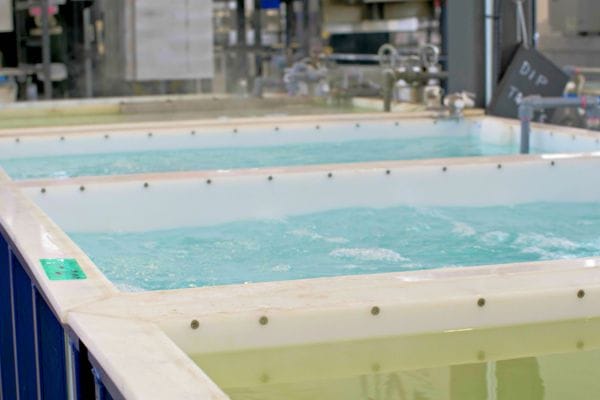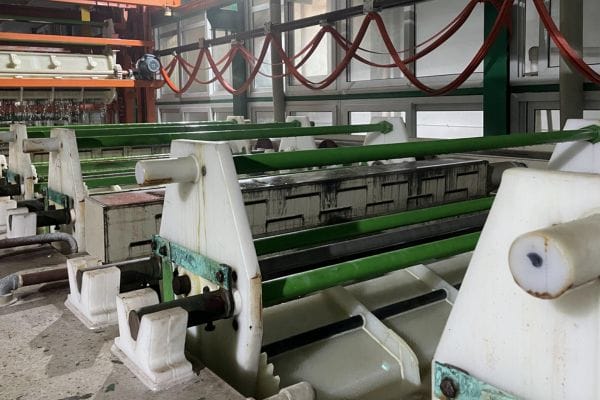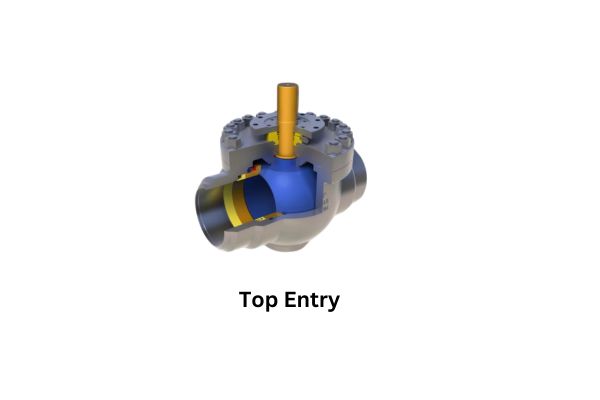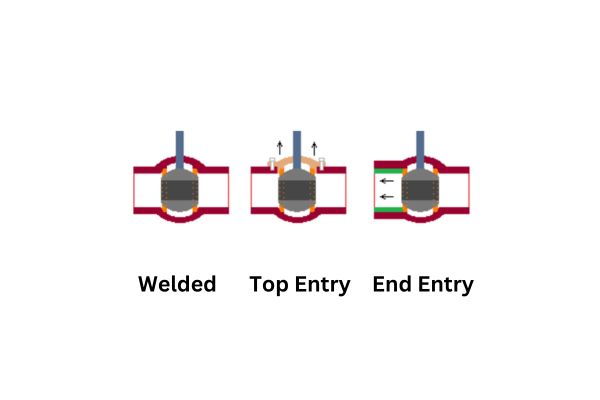Even though stainless steel has a natural resistance to rust and corrosion, this resistance is not absolute. Over time, exposure to fluids, moisture, and chemicals in the system can cause degradation. In extreme cases, corrosion can compromise the integrity of the fittings, resulting in leakage, poor performance, and costly repairs.
What Are Stainless Steel Hydraulic Fitting Surface Treatments?
Surface treatments for stainless steel hydraulic fittings refer to a variety of processes that modify the surface properties of the fittings to improve their performance and durability in hydraulic systems. These treatments involve applying a protective layer or altering the surface characteristics to better resist the harsh conditions that stainless steel components typically face, such as high pressure, friction, corrosion, and exposure to hydraulic fluids.
The purpose of these treatments is to:
Enhance corrosion resistance: Hydraulic systems often deal with moisture, chemicals, and high-pressure environments, which can cause metal to corrode over time. Surface treatments add a protective barrier that helps resist corrosion.
Improve wear resistance: The constant friction between fittings and connected components can lead to wear and tear, compromising the integrity of the system. Surface treatments provide a smooth and durable finish that minimizes friction and enhances the longevity of fittings.
Increase overall performance: Whether it’s preventing leaks, reducing maintenance, or extending the lifespan of fittings, surface treatments enhance the overall performance of the hydraulic system, ensuring its efficiency and reliability.
In summary, surface treatments make stainless steel hydraulic fittings more suited for the demanding and often abrasive environments of hydraulic systems by boosting their protective and functional properties.
Key Benefits of Surface Treatments
Corrosion Resistance
Stainless steel, while resistant to some forms of corrosion, is not immune to damage from moisture, chemicals, and other environmental factors. Surface treatments such as passivation or electroplating add an extra layer of protection, preventing rust and corrosion, which are common issues in industries like construction, manufacturing, and oil & gas.
Wear Protection
Over time, the constant friction and pressure in hydraulic systems can cause wear on fittings. By applying treatments like polishing or anodizing, the surface of stainless steel fittings becomes smoother and harder, which reduces friction, minimizes wear, and prolongs the life of the components.
Performance Enhancement
Surface treatments can improve the overall efficiency of hydraulic systems by enhancing the surface finish, which can lead to better sealing and leak prevention. Additionally, treatments like electropolishing can smooth out microscopic imperfections, which not only improves performance but also the aesthetics of the fitting.
Passivation
How Passivation Enhances Stainless Steel Corrosion Resistance
Passivation is a vital surface treatment designed to enhance the corrosion resistance of stainless steel, a material already known for its durability. The process works by removing free iron particles and contaminants from the metal surface and forming a thin, invisible oxide layer that acts as a barrier against corrosion. This oxide layer is naturally occurring and develops when the steel reacts with the treatment solution, typically nitric acid or citric acid.
The main benefits of passivation are:
Enhanced Corrosion Resistance: The oxide layer created by passivation makes the stainless steel surface highly resistant to corrosion, particularly from harsh chemicals, moisture, and oxygen exposure. This protection extends the life of the fittings by preventing rust and oxidation from forming.
Prevention of Surface Contamination: Free iron particles, which can promote rusting, are removed during passivation, leaving behind a cleaner, smoother surface. This ensures that contaminants do not contribute to corrosion over time.
Long-Term Durability: The formation of this passive oxide layer makes stainless steel fittings resistant to environmental wear and tear, allowing them to withstand prolonged exposure to challenging conditions.
Passivation doesn’t just protect the surface; it ensures that the fittings remain functional and reliable even in harsh industrial environments and high-pressure hydraulic systems.

Benefits in Hydraulic Applications and Pressure Systems
In hydraulic systems, stainless steel fittings are subjected to high pressures, aggressive chemicals, and varying temperatures. Without an effective method to resist corrosion, these fittings would degrade over time, leading to potential system failures, leaks, and costly maintenance.
Here’s how passivation benefits hydraulic applications:
Corrosion Resistance in Harsh Environments: Hydraulic systems often transport fluids like oils, acids, and solvents that can cause steel to corrode. Passivating stainless steel fittings ensures they resist corrosion even when exposed to these aggressive fluids.
Enhanced Longevity and Reduced Maintenance: By protecting fittings from rust and degradation, passivation improves the overall lifespan of hydraulic components. This leads to fewer failures, reducing downtime and maintenance costs.
Pressure Resistance: For hydraulic systems that operate under high pressure, passivation strengthens the stainless steel, preventing it from deteriorating under intense conditions. This ensures consistent and reliable performance, crucial for maintaining system integrity.
Ideal for Industrial Applications: Whether used in manufacturing, construction, or automotive hydraulics, passivated stainless steel fittings are durable and resistant to rust, making them highly suitable for industrial use where continuous, dependable performance is essential.
Electroplating
Types of Electroplating and Their Applications in Hydraulic Systems
Electroplating is a process that involves depositing a thin layer of metal onto the surface of stainless steel fittings using an electric current. This layer not only enhances the aesthetic appeal but also significantly boosts the corrosion resistance, wear resistance, and durability of the fittings. There are several types of metals commonly used for electroplating, each with its specific benefits for hydraulic systems.
Nickel Plating:
Nickel plating is one of the most common electroplating techniques used on stainless steel hydraulic fittings. It provides a smooth, shiny finish that enhances the appearance of the fittings. But beyond aesthetics, nickel plating also offers excellent corrosion resistance, especially in environments with exposure to moisture, chemicals, or acids. Additionally, nickel-plated fittings are resistant to abrasion and wear, making them ideal for hydraulic applications where longevity and performance are paramount.
Applications in Hydraulic Systems: Often used in high-pressure systems and marine environments, nickel plating helps stainless steel fittings perform well under harsh, corrosive conditions, extending their service life and reducing maintenance.
Chrome Plating: Chrome plating is another popular electroplating technique that enhances the surface hardness of stainless steel fittings. The chromium layer increases the wear resistance of the fittings, ensuring they can handle high-pressure fluids and abrasive environments without degrading. The reflective surface also improves the fitting’s aesthetic quality.
Applications in Hydraulic Systems: Chrome plating is used in hydraulic systems requiring components to withstand high wear, like pumps, valves, and actuators. It’s commonly used in industries like automotive and aerospace for fittings exposed to mechanical stress.
Zinc Plating: Zinc plating provides a sacrificial layer on stainless steel, protecting the base material from corrosion. When exposed to moisture or other corrosive elements, the zinc coating corrodes first, thus protecting the stainless steel beneath. Zinc-plated fittings are often used in situations where the fittings are exposed to mild corrosive environments, as the sacrificial nature of zinc helps prolong the life of the steel.
Applications in Hydraulic Systems: Zinc plating is frequently used for general-purpose fittings in industrial settings, such as piping and connectors, where the level of corrosion exposure isn’t as severe but still requires some level of protection.
Electroplating vs. Galvanization: What’s the Difference?
Though both electroplating and galvanization provide protective coatings for stainless steel fittings, there are distinct differences between the two processes in terms of method, coating thickness, and application.
Electroplating:
In electroplating, a thin metal coating is deposited onto the stainless steel surface through the use of an electric current. The layer is precise and thin, usually just a few microns thick. It’s ideal for fine finishes and applications where a sleek, polished look is desired.
Electroplating offers more precision and control over the coating thickness and is often used when the coating needs to be uniform and smooth.
Galvanization:
Galvanization, on the other hand, involves dipping stainless steel fittings into a bath of molten zinc. This process creates a thicker, more robust coating that is designed to provide long-term protection against harsh environments, particularly rust and corrosion.
The thicker coating of galvanized fittings makes them suitable for applications exposed to more severe corrosive conditions, such as outdoor environments or industrial use.
Galvanization is typically used when higher corrosion protection is required, particularly for large industrial projects.
Polishing
The Process and Advantages of Polishing Stainless Steel Fittings
Polishing stainless steel fittings is a process that involves mechanically smoothing the surface by using abrasive materials or polishing compounds. This technique helps to remove imperfections, smooth out rough surfaces, and create a mirror-like finish that enhances both the aesthetic appeal and functional performance of the fittings.
Process Overview: The polishing process typically begins with coarse abrasives to remove larger imperfections or scratches, followed by finer abrasives to achieve a high-gloss finish. Common tools used for polishing include rotary polishers and abrasive belts.
Advantages:
Aesthetic Appeal: A polished surface is visually striking, often desired for components that will be visible or in high-traffic areas.
Durability and Maintenance: Polished fittings are easier to clean and maintain, as smooth surfaces are less likely to accumulate debris, oils, or fluids.
Improved Performance: The smooth finish of polished stainless steel fittings reduces surface imperfections, which can contribute to friction and wear in hydraulic systems.
Impact of Surface Smoothness on Friction Reduction and Sealing
A smooth, polished surface significantly enhances the performance of stainless steel hydraulic fittings, especially in systems where fluid flow, friction, and wear resistance are critical factors.
Friction Reduction: Hydraulic systems rely on fluid flow through interconnected fittings. When fittings have rough or imperfect surfaces, they create resistance that increases friction. This additional friction can lead to wear on components, higher energy consumption, and even the potential for overheating. By polishing the surface, this friction is minimized, leading to smoother operation and reducing wear on both the fittings and other parts in the system.
Enhanced Sealing Performance: One of the critical aspects of hydraulic fittings is their ability to form a tight seal with other components. A polished surface ensures a tighter fit and less room for imperfections that might allow fluid leakage. This is especially important in high-pressure systems where leaks can cause significant system inefficiencies and safety hazards.
Fluid Integrity: The smooth surface also helps with fluid flow optimization, ensuring that fluids pass through the fittings without turbulence or loss, ultimately improving system efficiency.
Coating
Common Coating Methods Used for Stainless Steel Fittings
Coating stainless steel fittings involves applying a protective layer to enhance their durability and resistance to environmental stressors. There are several coating methods commonly used for hydraulic fittings, each suited to different needs and conditions. Here’s a look at the most popular coating techniques:
Powder Coating: Powder coating is a dry finishing process in which a fine powder is applied electrostatically to the stainless steel surface and then cured under heat. This results in a tough, durable finish that is resistant to chipping, scratching, and fading. It is ideal for fittings exposed to abrasive environments or heavy-duty use, such as hydraulic systems in construction or manufacturing.
Thermal Spray Coatings: Thermal spray coatings involve spraying a molten material (such as ceramic, aluminum, or zinc) onto the surface of the fitting, creating a hard and durable layer. This method is particularly useful for fittings exposed to high temperatures and harsh conditions. Thermal spray coatings provide excellent wear resistance, thermal protection, and a barrier against corrosion.
Paint Coatings: Paint coatings are often applied for aesthetic purposes but can also provide additional protection against rust. Specialized paints that contain rust inhibitors are used to enhance the corrosion resistance of stainless steel fittings, especially in environments with moderate exposure to moisture and chemicals. Paint coatings are more flexible and easier to reapply compared to other coating types.
Galvanization
How Galvanization Improves Corrosion Resistance
Galvanization is a process that involves applying a protective coating of zinc to stainless steel fittings. The zinc layer serves as a sacrificial anode, which means it corrodes first, protecting the underlying stainless steel from rust and corrosion. This characteristic makes galvanized fittings especially effective in preventing degradation in environments prone to moisture, chemicals, and other corrosive elements.
Sacrificial Protection: The zinc coating corrodes before the stainless steel, preventing rust from reaching the base metal. This is particularly beneficial in environments where maintaining the integrity of the fitting is crucial.
Extended Lifespan: By shielding the stainless steel from direct exposure to moisture and corrosive chemicals, galvanized fittings can last significantly longer compared to untreated fittings, making them a cost-effective solution for long-term durability.
Resistant to Harsh Conditions: Galvanization enhances the ability of stainless steel fittings to withstand aggressive environments, such as marine applications, outdoor industrial settings, and areas with high levels of humidity or pollution.

Applications in High-Pressure and Harsh Environments
Galvanized fittings are particularly beneficial for high-pressure systems and harsh industrial applications, where durability and reliability are paramount.
Hydraulic Systems: In hydraulic applications, fittings are often exposed to pressurized fluids that can accelerate rust formation. The zinc coating not only helps prevent corrosion but also improves the wear resistance of the fittings, ensuring they can handle the stress and demands of high-pressure environments without degradation.
Industrial Applications: Fittings used in industries like construction, agriculture, and marine benefit from galvanized coatings, as they are exposed to chemicals, moisture, and fluctuating temperatures. Galvanized fittings offer enhanced rust prevention and long-term durability, making them ideal for these tough environments.
Outdoor Exposure: For fittings used in outdoor environments, galvanization offers extra protection against rain, humidity, and other environmental factors that could accelerate the natural corrosion process. This makes galvanized fittings perfect for applications like irrigation systems, oil rigs, or marine equipment.
Choosing the Right Surface Treatment for Your Stainless Steel Hydraulic Fittings
When selecting the right surface treatment for stainless steel hydraulic fittings, several factors must be taken into account to ensure the treatment aligns with the specific needs of your hydraulic system. The treatment process will influence the durability, performance, and longevity of the fittings, and selecting the most suitable one can prevent costly failures or downtime. Let’s explore the key factors to consider when choosing a surface treatment.
Factors to Consider When Selecting a Surface Treatment
Application Requirements
Different hydraulic systems have varying demands based on the nature of the fluids being transported, the pressure they operate under, and the overall operating environment.
Corrosion resistance, wear resistance, and friction reduction may be prioritized based on whether the fitting is used in a high-pressure system, aggressive chemical environment, or in submerged or outdoor conditions.
Consider if the system requires tight seals, as treatments like polishing or electropolishing improve surface smoothness, reducing leakage risks.
Environmental Conditions
The environment in which the hydraulic system operates plays a significant role in determining the best surface treatment. For example:
If fittings will be exposed to moisture, saltwater, or other corrosive elements, a treatment like passivation or electroplating may be necessary.
For systems that will encounter extreme temperatures or abrasive conditions, anodizing or coating may provide added protection.
Outdoor or exposed systems may require galvanization or coating to resist environmental degradation.
Material Considerations
Stainless steel comes in various grades, each with different corrosion resistance and mechanical properties. The surface treatment should complement the stainless steel grade used for the fittings.
For example, 304 stainless steel may benefit from passivation for added protection against corrosion, while 316 stainless steel might require less surface treatment due to its inherent resistance to corrosive elements.
How to Match Treatments to the Intended Hydraulic System or Industrial Fitting
For Hydraulic Systems in High-Pressure Environments:
Electroplating or coatings like PTFE (Teflon) or polyurethane may be beneficial, providing a durable protective layer that resists wear, scratches, and chemical exposure while maintaining the integrity of the fitting.
For Corrosive Fluid Handling:
Passivation is ideal for improving the corrosion resistance of stainless steel fittings in systems dealing with harsh fluids, such as chemicals or salty water.
For Applications with Frequent Abrasive Wear:
Polishing or electropolishing is effective for reducing surface roughness and improving the ability of fittings to handle friction and wear, particularly in systems involving constant movement or vibration.
For Aesthetic and Functional Enhancement:
Anodizing or electropolishing not only improves corrosion resistance but also enhances the surface’s aesthetic appeal by providing a smoother, shinier surface.
Conclusion
To maximize the performance of your hydraulic system, always consider the unique demands of your application and environmental factors when choosing the right treatment. With proper surface treatment, your stainless steel hydraulic fittings will deliver optimal performance, extended lifespan, and reliable service for years to come.
FAQ
What is passivation, and why is it important for stainless steel hydraulic fittings?
Passivation is a chemical treatment that enhances the corrosion resistance of stainless steel by removing free iron and contaminants from the surface. It creates a protective oxide layer that prevents rust and corrosion, making it ideal for hydraulic fittings exposed to harsh environments.
What is the difference between electroplating and galvanization?
Electroplating involves applying a thin metal coating, such as nickel or chrome, to a fitting using electricity, whereas galvanization involves dipping the fitting into molten zinc. Galvanization provides a thicker, sacrificial zinc coating that corrodes first, offering stronger protection in harsh environments.
Why is polishing important for stainless steel hydraulic fittings?
Polishing improves the surface finish of stainless steel fittings by reducing surface roughness. This helps reduce friction, minimizes wear, and enhances sealing capabilities, improving the overall performance and longevity of hydraulic systems.
What are the benefits of coating stainless steel hydraulic fittings?
Coating provides additional protection against corrosion, wear, and damage. Common coatings, such as powder coating or thermal spray, are especially beneficial in industrial and high-temperature applications, offering enhanced durability in challenging environments.
How does galvanization protect stainless steel from corrosion?
Galvanization applies a protective zinc layer to stainless steel fittings, which acts as a sacrificial anode. The zinc corrodes first, protecting the underlying steel from rust and extending the life of the fitting, especially in environments with moisture or chemicals.
How do I choose the right surface treatment for my hydraulic fittings?
When selecting a surface treatment, consider factors like the hydraulic system’s operating conditions, environmental exposure (e.g., moisture or chemicals), and the desired lifespan of the fittings. Each treatment, such as passivation, electroplating, or polishing, offers specific benefits tailored to different applications.






